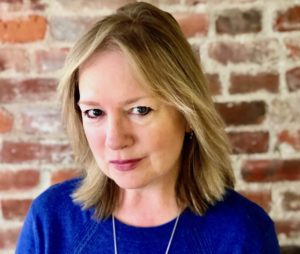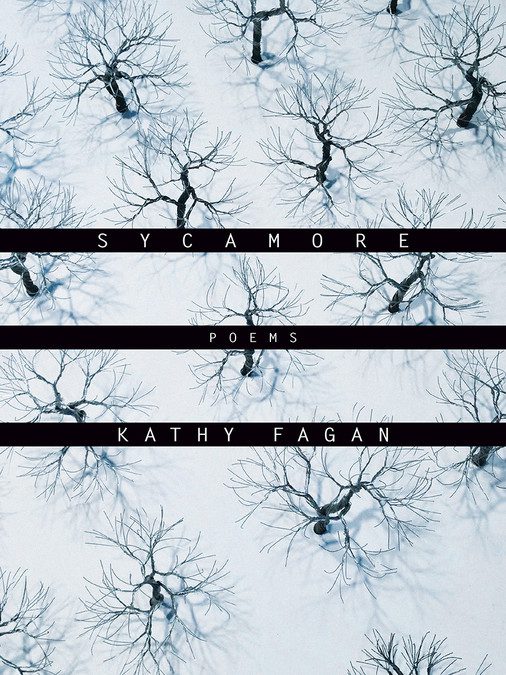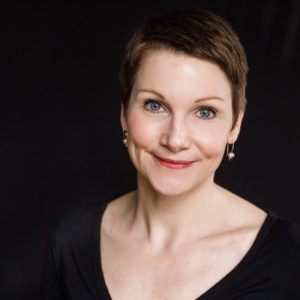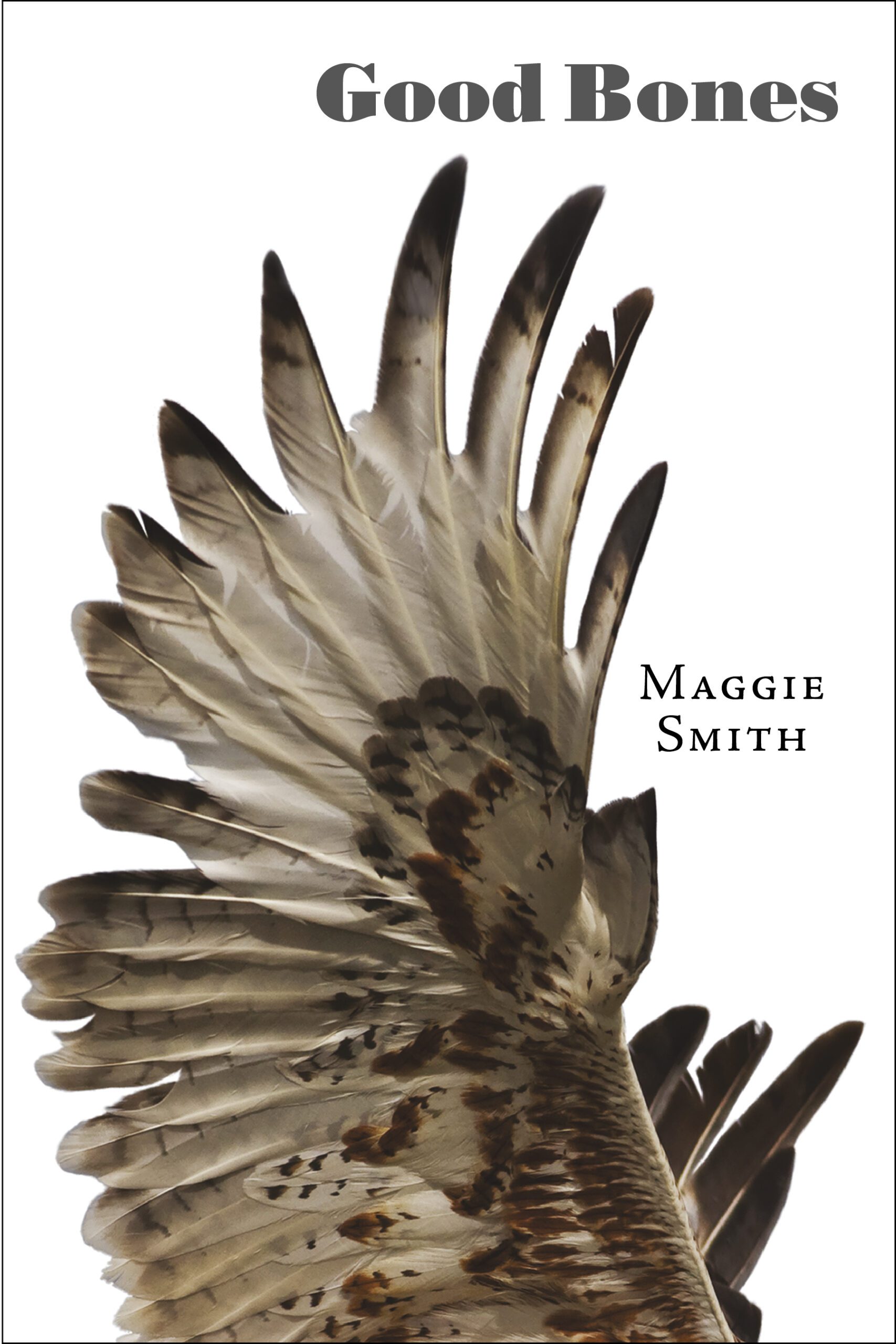
For National Poetry Month I’m pleased to bring you the second interview in The Mentor Series between the poet Maggie Smith and her mentor Kathy Fagan. Currently the director of the MFA program at Ohio State, Fagan is the author of the poetry collection, Sycamore, along with four other books. Smith, of the beloved poem “Good Bones,” is the author of three full-length poetry collections and several chapbooks.
What follows is a candid conversation about reinvention, arranging a poetry collection, and how a poet plays the long game.
– Monet Patrice Thomas, Interviews Editor
***
Maggie Smith: One of the things I admire most about you is how each book of yours feels like its own thing—not a continuation of the previous book or a preview of the next one. Could you speak to the idea of “reinvention” in your life as a poet?
Kathy Fagan: Thanks, Mags. I’ve heard that remark leveled as a criticism of my work as often as praise, but I don’t have a whole lot of control over it. For one thing, I don’t write quickly, so the books aren’t finished fast. For another, they tend to appear with many years between them; until recently some of that had to do with not having a single press to rely on. I’ve spent decades practicing the craft of poetry, and have—surprisingly, given the odds—built a life on it, but until my fifth book was contracted, I didn’t have an independent publisher with as deep a commitment to poetry as Milkweed has, along with the financial stability to back that commitment up. For thirty-plus years, each of my books up to Sycamore had been shopped over long periods of time until published, with little to no support system in place for review opportunities or marketing. Such is the state of the art; there are more poets than not contending with such conditions.
On another, more personal note, much of the reinvention you speak of happens because I change. I’m open to try stuff, in life and poetry. Some I choose and some happens to me, but I’m changed every time. Poetry as an art is so capacious, so limitless, it’s able to absorb and reflect each new music, image, and influence: medieval iconography, tree diseases, historical personae, and deeply autobiographical material. I’ve come to terms with the fact that I’m an experiential learner and that writing poems helps me to discover what I need to know, and even (this would have caused me all the shudders when I was young, but now—what the hell!), even how I feel, maybe especially that.
Also, I revere the line above all things in a poem. Most of the play and work of a poem for me is experimenting with how a line and the sentence it lives in work together to create rhythms and meanings adjacent to the poem’s content. They create pacing, too, of course, which is related to the modulations of voice one hears in a poem—reserve, sarcasm, despair, affection, resignation, ecstasy—and the intimacy of that is very appealing to me, essential really. It’s an element that goes beyond craft that we don’t much talk about in poetry, but which goes a long way toward explaining, I think, a lot of what’s inexplicable about its power.
Smith: Your most recent book, Sycamore, is one I’ve been keeping close at hand. It seems to me to be a book about loss and upheaval, about finding the spring in ourselves after a long winter. Maybe even reinvention? How do you see this book as different from or similar to your previous collections?
Fagan: Sycamore has an emotional connection to my second book, Moving & St. Rage, which took fourteen years to finish because I stopped writing when my best friend died. The loss behind Sycamore was equally gutting for me, but it generated poems rather than shutting them down. If silence was the reply I made to my friend’s death, poetry was the reply I made to what I felt would be my own.
I’ve thought a lot about these two responses to loss—my age had something to do with each of them—but I remember feeling slammed closed when my friend died and broken open when my marriage did. What I mean is, there was light and air for me in the second loss; it didn’t matter that it was winter light, and air so cold it hurt my lungs, I wrote in the kind of fever then that writers envy and fear—I know you understand this. I lived for my poetry and my trees. When the fever broke, I had a book to make, and that was about discovering how the sycamore poems and the speaker’s grief were related—they are, more subtly in the book than in my life, but it took me a little time and therapy to figure out how.
I thought of the book following Moving & St. Rage, The Charm, as a sort of antidote to grief—it investigates the magic and terrors of childhood and casts little spells or charms to ward off loss and death. My fourth collection, Lip, swings widely away from personal matters; in fact, it’s a collection of persona poems. I did so much research for that book, and built so many different kinds of poem vessels in it. One of them, at least, brought me back home—I still do a lot of research for my poems, but the true work is largely internal now.
It was my therapist, for instance, who recommended I read Herodotus’s The Histories, specifically passages on the habitual sale of women and the excruciating hierarchies of such purchases; before that I’d found Aristotle’s writing on animal prudence, the title of one poem in the new manuscript, which inspired further research into predation. From there, to monthly visits with my father to the VA Clinic, to research in falconry, and my obsessive tracking of AccuWeather reports (its “Real Feel” temperatures and Daily Hunting Forecasts, for example), I’ve learned many little lessons in language, gender, health, reproduction, and survival as commodity, painfully relevant to all of us.
Smith: I’m so excited to read the new manuscript. I’m curious: How do you go about arranging a book? At what point do you even know that what you’re working on is a book and not a pile of disparate poems?
Fagan: You’re so very skilled at it, Mags, but I find it hard to arrange a book of my own. I know when the poems are all there—I know that the poems for my next book are all in. But I was on a very clear trajectory with Sycamore, and the seasonal arc of the book supported the emotional path behind it. My job was sorting and revising—which poems were “real,” finished poems, which potential poems, and which best kept in a journal.
The new book, also thematically based, poses a different challenge: I have to create in its arrangement the right set of psychological, what I might call, vistas. The new poems explore multiple levels of perception and predation, perception itself a predatory act, and to make poetry, to some degree, attempts to keep fresh the wounds of the prey. That is, to make poetry, for me, engages the space between what is universally relevant and deeply personal, useful and beautiful, nameable and mysterious. In poems—indeed in all the art I love best—I hope to find a bridge to span that space, creating dialogue, tension, and possibility: the experience inside. I’d really love if the collection as a whole did that work as well. When I catch a break this semester, and with dad-duties, I’ll get on it.
Smith: You know how much I admire and respect you, and how much your mentorship has meant to me over the past eighteen years. (Wait—eighteen years?!) Whose career—or life, as I find myself cringing at the word career—in poetry has inspired or motivated you? What specifically do you admire or respect about how that person has made their way?
Fagan: Oh my, but it does become a career, doesn’t it? Once you devote a couple of decades to a thing, to its making and its presentation? I remember thinking career as in careerism, and maybe it is that for some, but for me it’s my vocation. As I get older I find myself in awe of women who hold down jobs and spend years care-giving while making poems. Many of them don’t get the accolades they deserve. Some of them don’t even have the advantages of a committed press or a writing community to support them, and yet they remain active, generous, and adventurous in life and writing: teaching, editing, sharing their various experiences and expertise.
I’ve tried to take all of my joy—maybe it’s not so much joy as fire? the bright light of attentive inquiry?—I’ve tried to get that from the work. I was ambitious when I was young but didn’t know where my focus should be. I was first-gen college, poor. I didn’t want to be a housewife or do a nine-to-five, but I had no clue what graduate school demanded either. After that I had to work to support myself and help my family, with no model of what the alternatives could be for someone like me, of what an artist’s life could look like, and struggled to see myself in poets I read and admired, even women poets.
There are two brief stories, though, encounters with poets’ lives that have stuck with me, that I’ve returned to when I need a jolt of motivation. One is a story I heard first from the marvelous poet Brenda Hillman, about Russian poet and dissident Irina Ratushinskaya—when Ratushinskaya died, too young, in 2017, I was reminded of this story in her obits. While incarcerated, she was not allowed paper and pen, so she inscribed lines for poems into bars of soap with matchsticks, memorized them, washed, inscribed, memorized, and so forth, until the poems could be somehow smuggled out. The second, equally compelling and resonant inspiration came from reading Audre Lorde’s Sister Outsider, specifically her discussion of being a different learner, and “feeling” her way toward poetry. There is so much in Lorde’s work and biography I wish I had found when I was a queer young writer, so many perspectives she had that would have made me feel less singular had I encountered them then. Both women instruct me how to be, as a poet, one’s most obsessively focused, courageous, and devoted advocate.
Smith: One of the things we’ve talked about before is “playing the long game.” Could you talk a little about what that means to you?
Fagan: In the last two years, I lost my mother; my father, who lives with us, is in steep decline, deaf and dementing; and Sycamore was published. These are personal and professional details that can’t help but inform both my writing and my way of being in the world. Hearing my father attempt to repeat simple words during a hearing test in a soundproof room, for example, or to be present during a neurological MOCA (Montreal Cognitive Assessment) test, allow me to approach language, fluency, memory, and so-called “executive” skills in particularly refreshing ways as a writer and citizen. I am privileged and challenged, both, to continue to make poems about what I learn, to continue to learn what poems can say.
Beyond that, I wish I had a more robust professional plan, a strategy to meet the milestones, an end-goal I could articulate, finally, after all this time in the biz, but I’m not especially good at it. I try to submit poems and grant applications, and I read as much as I can. Social media helps—and hurts—that way. I read way more than I post, occasionally posting pictures of my cat, retweeting former students’ poems, or announcing local readings in Columbus when I’m aware of them. Sometimes, I post a link to a poem of my own.
I’m not young, nor was I ever beautiful or a genius. The long game, for me, is to remain alive long enough to write my best poems, by which I mean staying open to poems conscious to the art and the life. I feel the urgency of that work. And to mentor with greater care than I was mentored, to remain as steadfast and resolute in my work ethic as humanly possible, to know when advancing or retreating is best—for me—and to behave kindly, because I wish to be treated with kindness, yes, but also because there is too little justice in the world already.
***
Photograph of Maggie Smith © Devon Albeit Photography.
***
Want more Mentor Series conversations? Visit the archives here.







